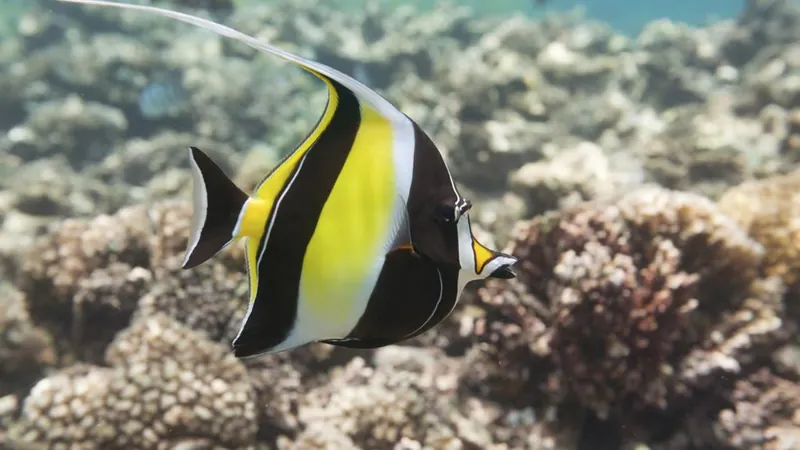
Reef Fish Revolution: Jaw Movements Unveiled by High-Speed Footage!
2025-05-05
Author: John Tan
Unraveling the Mystery of Reef Fish Feeding Habits
In a groundbreaking discovery, scientists at the University of California, Davis have revealed that certain reef fish possess a jaw movement ability rarely seen among vertebrates. This unique adaptation, allowing side-to-side jaw motion, has significant implications for how these fish efficiently feast on algae clinging to rocks.
A Rare Trait Among Vertebrates
While jaw mobility might be a given for humans, it’s virtually an anomaly in the vast world of vertebrates—half of which are fish. Peter Wainwright, a leading biologist on the project, highlights that while this movement is crucial for terrestrial mammals to chew their food, it presents fascinating ecological and evolutionary questions when seen in fish.
Feeding Techniques Under the Microscope
Typically, fish catch their meals by sucking in prey from the water column. However, about half of reef fish species engage in a more specialized feeding method: grazing on algae and other organisms directly from the reef structure.
High-Speed Video Breakthrough
Using cutting-edge high-speed video technology, researcher Michalis Mihalitsis observed the Moorish Idol (Zanclus cornutus), an exquisite reef fish known for its distinctive elongated snout. To his astonishment, he found that this species could maneuver both its upper and lower jaws sideways—a capability that enables the fish to extract food from surfaces and enter tight spaces.
Wainwright exclaimed, “Holy cow, that’s not something we expected!” Subsequent CT scans and dissections confirmed that these jaw movements occur too quickly for the naked eye to notice.
Exploring Surgeonfish and Beyond
Building on these discoveries, the research team investigated the surgeonfish, a prominent group of herbivores on the reef. They found that these fish also utilize sideways jaw movements to efficiently nibble on algae from rocky surfaces. Wainwright described how they can seize a mouthful of algae and skillfully detach it from the substrate.
Mihalitsis noted that this adaptation appears connected to the specific feeding behavior of each species—while Moorish Idols thrive in crevices, surgeonfish excel at broader grazing.
Future Research Directions
The researchers are now turning their attention to other bottom-feeding fish to determine if similar jaw adaptations exist, which could revolutionize our understanding of fish feeding strategies. Mihalitsis, who has moved on to become an assistant professor at the University of Guam, highlighted the potential for new findings that could reshape marine biology.
This research not only enriches our comprehension of reef ecosystems but also opens doors to new inquiries about the evolutionary pathways that have led to such remarkable adaptations.


 Brasil (PT)
Brasil (PT)
 Canada (EN)
Canada (EN)
 Chile (ES)
Chile (ES)
 Česko (CS)
Česko (CS)
 대한민국 (KO)
대한민국 (KO)
 España (ES)
España (ES)
 France (FR)
France (FR)
 Hong Kong (EN)
Hong Kong (EN)
 Italia (IT)
Italia (IT)
 日本 (JA)
日本 (JA)
 Magyarország (HU)
Magyarország (HU)
 Norge (NO)
Norge (NO)
 Polska (PL)
Polska (PL)
 Schweiz (DE)
Schweiz (DE)
 Singapore (EN)
Singapore (EN)
 Sverige (SV)
Sverige (SV)
 Suomi (FI)
Suomi (FI)
 Türkiye (TR)
Türkiye (TR)
 الإمارات العربية المتحدة (AR)
الإمارات العربية المتحدة (AR)